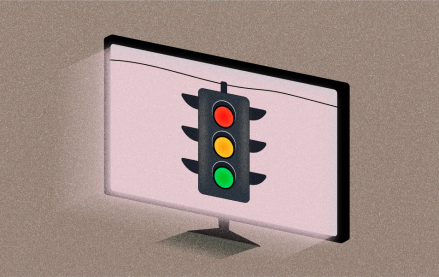Up until recently, mobile advertising has basically been the same as desktop advertising, only smaller. That’s why many publishers and agencies have been pushing rich media for mobile campaigns. But rich media isn’t the real difference maker in mobile: touch changes everything.
Mobile is shifting from the smaller third screen to a vibrant touch screen. This is adding many technical toys to a marketer’s bag of tricks. Users can now interact simply by touching or swiping a screen. Where Tom Cruise used his hands to swipe through video and solve murders on the giant screen in the sci-fi thriller The Minority Report, smartphone and tablet owners today are figuring out what restaurant to eat at, what flight to book and what movie to see using that exact same technology, in the palms of their hands. Recent studies show that 21 percent of consumers with phones search on them — a huge untapped and growing market for advertisers.
That’s where rich media comes in. Combine this tactile screen technology with video, add in targeting and measurement capabilities, and we begin to grasp the next chapter of digital advertising. Mobile allows the best of online advertising’s interactivity, trackability and targeting while allowing advertisers to build a connection between the audience and the product through tactile, interactive storytelling. If seeing is believing, touching is experiencing.
One recent example: Yahoo worked with Crisp Media to create a mobile campaign to promote a new animated film WHAT MOVIE. It ran on Yahoo’s mobile home page and mobile movies page on both iPhone and Android devices. When the user visited either of these front-pages, a small animated character popped up from the bottom of the screen and waved to the user. Tapping on the character caused an overlay ad to appear. Swiping or poking the character, causing him to change color. Users could also chose to ignore the character or even get rid of him with a tap of their finger.
The campaign delivered a 6.5 percent click-through rate. When users did interact with the character, the engagement rate that was “off the charts,” said Tom Limongello, Crisp’s vp of marketing.
The ad worked because it was fun but not intrusive. Once the users chose to engage, it became interactive and playful; it was easy to build a strong connection between the character and the user.
Overall, the touch-screen environment is more inviting to users interested in ads — whereas a click on a Web page typically takes someone to a movie’s microsite, in this case could engage with the ad and stay where they were. The lesson for advertisers is to not lose sight of touch when crafting mobile campaigns.
Alex Linde is director of mobile advertising at Yahoo. Follow him on Twitter @usuallyalex.
More in Media

What publishers are wishing for this holiday season: End AI scraping and determine AI-powered audience value
December 22, 2025
Publishers want a fair, structured, regulated AI environment and they also want to define what the next decade of audience metrics looks like.

Media giant Essence launches a marketplace for Black women-led brands
December 22, 2025
Essence has launched WeLoveUs.shop, a new online marketplace dedicated to Black women-led brands.

In Graphic Detail: The state of AI referral traffic in 2025
December 22, 2025
The stats reveal a new audience pipeline forming outside of traditional search and social platforms.





